SOUND MIRROR DEVICE
First Vision
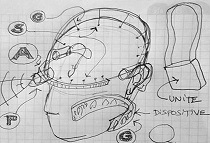
Original "HEAD MONTED DEVICE" image. This was the first project idea. Originally called: SA-A-4ALL (for: "say-hey-for-all" allussion)
WHAT´S SOUND MIRROR DEVICE
Starting intention
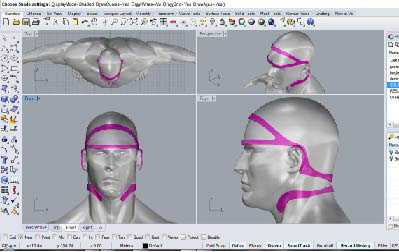
First fussion image
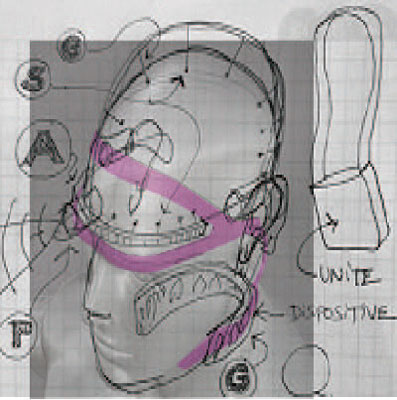
WHAT WILL IT DO ?
This SOUNDS MIRROR DEVICE inform his users about remarkable sound sources issued it out of theirs vision scope. This is specially for all whom suffer naturally -or artificially induced- hearing loss. It function through simple lighting codes signals that are diametrally head user opossed about his original sources, added with an intensity criteria.
ACTUAL MOMENT
at this time...

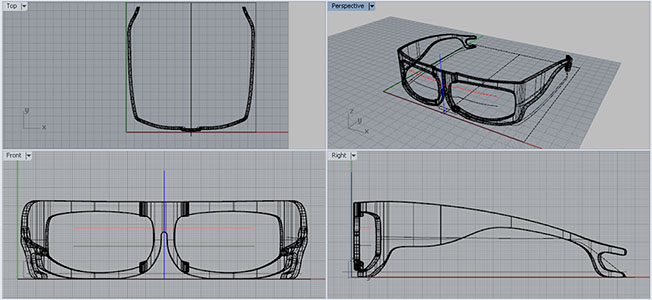
VERSION BETA: GLASSES WITH LEDS
Had in mind the viability of the project the first version has to have development in a common personal glasses.
Who's done what beforehand?

RINGS AND BRACELET VIBERING SOUND SENSOR (Image from: www.eloido.com
By, “ Kwang-seok Jeong, Min-hee Kim y Hyun-joong Kim issue: two rings and bracelet at wifi generate out of scope sounds detection and basic discrimination of them. eventually they can detect too position and distance according to sounds fonts.M19MY15
SENSOR SOUND BITE Image from: www.eloido.com
This “Sonitus Medical” product, its focused to slightly hearing loss users and its composed by one back ear external device and another mouth in molar sound transductor via craneal bones vibration. its result recover stereo perception of sounds
DEAF SIGNALS TRANSLATE INTO LETTERS OF THE ALPHABET Image from: www.eloido.com Engineeral thesis by Fernando Arturo León Montoya and Xavier David Meriño Miño
Sensor gloves with java technology that allows a deaf user talk in his signals language while on the other way a device transduct letters in his sounds for hearing standard people. Developers:Universidad Politécnica Salesiana Ecuador, Eng Fernando Arturo León Montoya, Eng Xavier David Merino Miño, Eng Raúl Alvarez Guale (Director)
TOUCH TONGUE HEARING from: TONGUE HEARING link
Cochlear implants, surgical invasive and not ever adecuate for some users, puts a hearing device on the temporal bone. this procedure has now an option: “touch tongue hearing” via contact a mouthpiece bluetooth device by mean of drawing the tongue´s multiple sensorial terminals.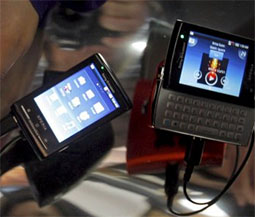
CELL PHONE FOR SEVERAL HOME BEEPS NOTIFYING from: www.elfuturo.com
It's called Adapta Home” and concern to cell phone with an app that allows deaf or hearing loss people convert audio signals inner house in messages that notice user, for example door ring, and in a future oven or microwave whistles. Developers: Rodrigo Palacios y Mario Martínez
DEAF SIGNALS LANGUAGE TO TEXT / SOUND from: www.cultura-sorda.eu
Interface for automatic recognition by movement of signal language in deaf people. His name it's “Acceleglove” and his six accelerometers and a x,y,z sensor one for any finger allows not only “read” on display the signals or words the speaker “say” on signals, as well as incorporate at the software the new words new speakers can add. This device were used too in robotics, rehabilitation, tele-training, and virtual worlds”. His users manual its publick free in Youtube (M19MY15). Developers: Anthro Tronix, US Army, Esteban Chacón, Darwin Aguilar, Fabián Sáenz.What materials and components will be required?
As well as the device its thinked for people with ability to see it has been considerated that his usefull features will be best fiting on a typical eyeglasses in sportive or medicated frames. Therefore the main structure carrying this accessory are a personal glasses. From this, there are two principal material processes to consider: The glasses fabrication and the electronic parts addition.
From there its obtain:
On glasses:
Wood, polycarbonate, screws, PLA, and;
On electronics:
Cable, leds, microphones, amplifiers, microcircuits and microcontrollers , for device.
Where will they come from?
Having in hand that some - speccially electronic parts - are not easy found it elements, some of parts are international imported and some are locally availables.
How much will it cost?
The next its the bill of materials:
What parts and systems will be made?
There are three parts that will be made:
What processes will be used?
- printing 3d protoyupe
- How to determine the sound rank attendant prevalence
- How much and how to create a simply lighting protocol easy to users understanding
- How to programmming control adjustement in typical waited uses
- How and which ways will have to facilitate the user customisation
- Task 1 WEEK 1 TO 1
- Task 2 2 2
- Task 3 2 4
- Task 4 3 5
- Task 5 5 6
How will it be evaluated?
- Quality on emulation real ranges to detection
- Oportunity for signals in little scale
- New uses provission beyond detection
- Possible Enhancements of the device at future
- Extended uses for it
- Others Judges criteria
ORIGINAL PROJECT IDEA
Vision and Brief description

HEAD MONTED DEVICE PROSPECTIVE IMAGE
This is the preview about how SAT4ALL DEVICE CAN BE USED FOR
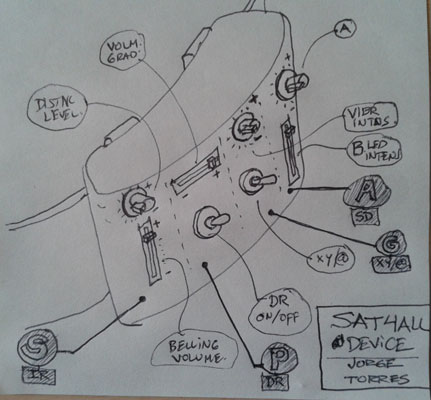
SENSORIAL + ORIENTATIVE SPACES HELPER
This is the portable Spatialized Assistive Technology 4 ALL , in Universidad Nacional de Colombia
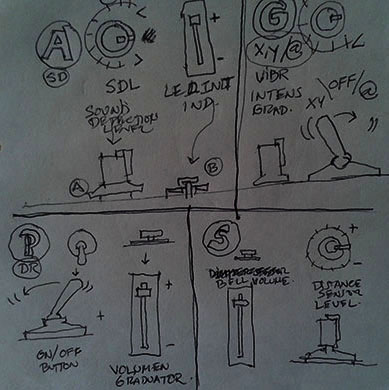
HUMAN INTERACTIONS CONTROLS
Four basic human operators that can to give in a graduate experience for user

- Kerfing up lens knots for assembling
- Circuits creating and surface parts solding
- Leds in glasses instalation
- Microphone circuits and programming
- Working testes
What tasks need to be completed?
- 1- Buying neutral lenses to install and electronical parts
- 2- Do booth, wood and PLA glasses frames
- 3- Tracing, making and programming micro´s
- 4- Assembling parts
- 5- Testing use and tunning cappabilities
What questions need to be answered?
What is the schedule?
This project pretend to reach total or gradual disability conditions on people forward to have some more progressive control day after day training with "SAT4ALL" device on real space navigation features.
PROJECT IDEA BASED ON :
Prosthetic Objects + Disability People
Energy Transduction And Human Servicing
Environmental Sensoring And User Control
blinded – deaf – cognitive space navigation assistance
OVERALL AIM
Final target
Space sensory recognition + creating an iner and outer orientative positioning sensorial enhancement device
JUSTIFICATION
Whi to do?
vivencial and didactic space evaluation for with and without disability people
FEATURES
What do?
APPLICATIONS
Where to use?
vivencial and didactic space evaluation for with and without disability people